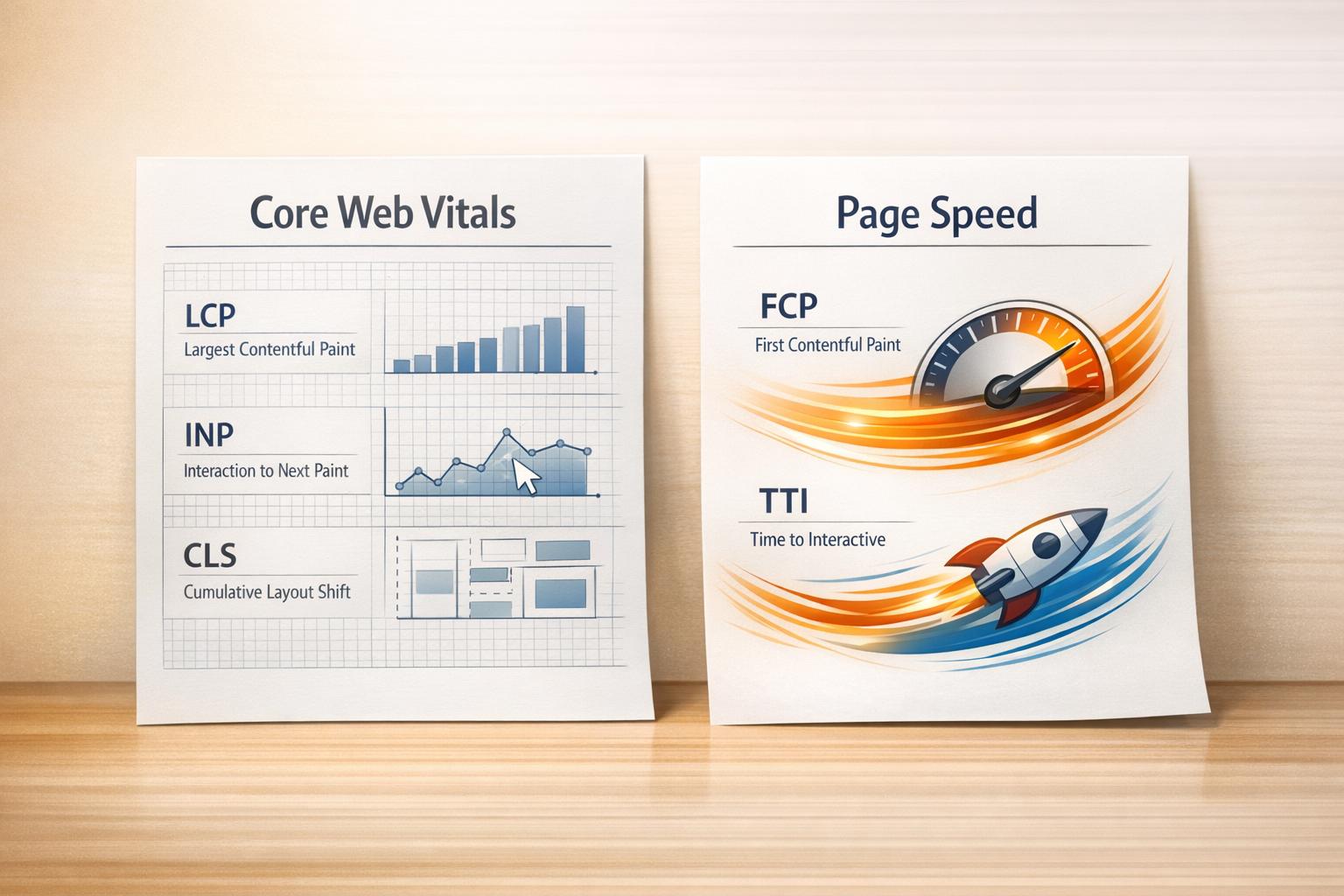

Complete On-Page SEO Guide: Optimize Your Pages

Complete On-Page SEO Guide: Optimize Your Pages
 17-09-2025 (Last modified: 22-09-2025)
17-09-2025 (Last modified: 22-09-2025)
In the digital marketing realm, on-page SEO remains a cornerstone for optimizing website performance, enhancing search engine rankings, and ultimately driving conversions. While off-page strategies like backlink building are often discussed, on-page SEO is where the foundation of your website’s success is built. This guide distills the insights shared in a training session on mastering on-page SEO techniques, helping marketers, small business owners, and SEO enthusiasts supercharge their website optimization efforts.
Why On-Page SEO Matters
On-page SEO refers to the process of optimizing individual pages on a website to improve their rankings in search engine results. Unlike off-page SEO – which involves external factors like backlinks – on-page SEO focuses on elements you control directly, such as content quality, keyword usage, URL structure, and internal linking.
For marketers and SEO professionals, mastering this aspect ensures not only better visibility but also a seamless user experience, which is critical for conversions.
Step-by-Step Guide to Mastering On-Page SEO
1. Perfect Your URL Structure
- What Is URL Structure: URLs are the building blocks of your website’s navigation and SEO. A well-structured URL can improve crawler efficiency and user readability.
- Best Practices:
- Use HTTPS for secure browsing.
- Keep URLs concise and include the primary keyword.
- Avoid subdomains; instead, use subfolders and categories to organize pages properly.
- Key Tip: Use “relative URLs” for internal links to avoid duplication issues, but ensure external URLs are “absolute” for clarity.
2. Craft Optimized Page Titles and Meta Descriptions
- Importance: Page titles and meta descriptions are often the first touchpoints for users on search engine results pages (SERPs).
- How to Optimize:
- Include primary and secondary keywords in titles.
- Keep titles under 60 characters and meta descriptions within 160 characters for full visibility on SERPs.
- Write engaging copy that encourages a click-through.
3. Structured Content with Headings and Subheadings
- Role of Headings: Clear headings (H1, H2, H3) structure your content and make it easier for search engines to understand the hierarchy of information.
- Tips:
- Use the H1 tag as your main title.
- Organize content with H2 and H3 tags for logical flow.
- Incorporate keywords naturally into your headings.
4. Keyword Integration: The Backbone of SEO
- Where to Use Keywords:
- Include them in the URL, title, headings, meta descriptions, and body content.
- Balance keyword density – avoid overstuffing, which can lead to penalties.
- Pro Tip: Use long-tail keywords to target specific user intent and improve rankings for niche topics.
5. Visual Content Optimization
- Why It Matters: Images, infographics, and videos enhance user engagement and break up large blocks of text.
- How to Optimize Visuals:
- Use descriptive file names for images and include alt text with relevant keywords.
- Compress images to improve website loading speed.
- Ensure videos are responsive and embed captions to improve accessibility.
6. Leverage Internal and External Linking
- Internal Linking:
- Link to other related content within your website to improve navigation and keep users engaged longer.
- Use descriptive anchor text to signal relevance to both users and search engines.
- External Linking:
- Cite authoritative sources to increase credibility.
- Use external links sparingly and avoid linking to competitors.
7. Focus on Mobile-Friendliness
- Why It’s Critical: With mobile traffic surpassing desktop, a responsive design ensures a seamless user experience across devices.
- Steps to Implement:
- Use mobile-first design principles.
- Run your website through Google’s Mobile-Friendly Test to identify issues.
8. Enhance Page Load Speed
- Impact on SEO: Slow-loading websites reduce user satisfaction and increase bounce rates.
- Quick Fixes:
- Optimize images and leverage browser caching.
- Minify CSS, JavaScript, and HTML files.
- Use a Content Delivery Network (CDN) for faster resource delivery.
Post Optimization: Evaluation and Tracking
Once you’ve implemented on-page SEO strategies, tracking their effectiveness is crucial. Use tools like Google Analytics and Google Search Console to monitor:
- Organic traffic growth.
- Keyword rankings.
- User behavior metrics (e.g., bounce rate, session duration).
Regular audits will reveal areas for further improvement and ensure your optimizations remain current with algorithm updates.
Key Takeaways
- Prioritize Security with HTTPS: A secure website ensures user trust and satisfies search engine ranking criteria.
- Simplify URL Structures: Keep them short, keyword-rich, and easy to read while avoiding unnecessary subdomains.
- Optimize for Mobile: Mobile-first indexing by Google makes responsive design essential for SEO success.
- Leverage Headers and Keywords: Organize content with H1, H2, and H3 tags while naturally incorporating relevant keywords.
- Optimize Visual Elements: Use alt text and compressed images to improve both accessibility and page speed.
- Internal and External Links: Build a strong internal linking structure and cite credible sources for external links to add value.
- Regularly Audit Performance: Use analytics tools to measure SEO impact and identify areas for improvement.
- Avoid AI Reliance: While tools like ChatGPT can assist with ideas, focus on original, human-created content to develop skills and maintain authenticity.
Final Thoughts
On-page SEO offers marketers, small business owners, and SEO professionals an unparalleled opportunity to control their website’s destiny. By focusing on the intricate details of URLs, keywords, headings, and visuals, you can transform your website into a high-performing, user-friendly platform that not only ranks higher but also resonates with your audience.
As you implement these strategies, remember that SEO is a continuous process. Regular audits and staying updated on algorithm changes will keep you ahead in the competitive digital landscape. The sooner you embrace these foundational tactics, the sooner you’ll see tangible improvements in both your organic traffic and conversion rates.
Source: “On-Page SEO | Complete Guide to Optimize Your Website | Prayug” – Prayug Unit of Stuvalley, YouTube, Aug 16, 2025 – https://www.youtube.com/watch?v=vu0a0MwRvj0
Use: Embedded for reference. Brief quotes used for commentary/review.
Related Blog Posts
say hello to easy Content Testing
try PageTest.AI tool for free
Start making the most of your websites traffic and optimize your content and CTAs.
Related Posts

 01-01-2026
01-01-2026
 Ian Naylor
Ian Naylor
Core Web Vitals vs. Page Speed: Key Differences
Compare Core Web Vitals (LCP, INP, CLS) with Page Speed metrics like FCP and TTI — learn their SEO roles, measurement differences, and optimization tips.

 30-12-2025
30-12-2025
 Ian Naylor
Ian Naylor
User Engagement Score Estimator
Estimate your website’s user engagement score with our free tool! See how interactive your content is and get tips to improve user interest.

 29-12-2025
29-12-2025
 Ian Naylor
Ian Naylor
CTA Phrase Planner
Struggling with CTAs? Use our free CTA Phrase Planner to create powerful, tailored call-to-action phrases that convert your audience!
